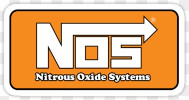 Question: I have a question about nitrous oxide. Is it legal to have a nitrous oxide system hooked up to a vehicle? If the bottle is detached from the system is it legal?
Question: I have a question about nitrous oxide. Is it legal to have a nitrous oxide system hooked up to a vehicle? If the bottle is detached from the system is it legal?
Does the appropriate DOT WHMIS oxidizer symbol convey any legality to transport?
Nitrous Oxide & the Superintendent's Standards
The 2016 version of the vehicle inspection manual (current today) says:
Additional fuel system (nitrous oxide type or equivalent) reject if installed or equipped or not of approved type for use on highway
Don't let the part about "for use on highway" confuse you. Because of the word or, it really reads reject if installed, reject if equipped, reject if not of approved type for use on highway. It fails if any of the three instances apply.
It will not matter if a cylinder is attached or not.
Will Not Pass Inspection
Essentially, that means if you have a system installed and the police issue a box 1 or box 2 inspection order, you will have to completely remove the system in order to obtain a pass.
Transportation of Dangerous Goods
The transportation of dangerous goods rules are there to warn people that dangerous goods are present, what needs to be done in an emergency and who to call for assistance when required.
Depending on the substance and quantity involved the person doing the transporting may not need to do anything or at the other end of the spectrum have training, placards and documentation.
The label that you speak of simply identifies the material in the package.
Share This Article
The 2016 version of the vehicle inspection manual (current today) says that if a vehicle is presented for inspection and has a nitrous oxide system installed or equipped it is to be rejected.
It will not matter if a cylinder is attached or not.
Essentially, that means if you have a system installed and the police issue a box 1 or box 2 inspection order, you will have to completely remove the system in order to obtain a pass.
The transportation of dangerous goods rules are there to warn people that dangerous goods are present, what needs to be done in an emergency and who to call for assistance when required. Depending on the substance and quantity involved the person doing the transporting may not need to do anything or at the other end of the spectrum have training, placards and documentation.
The label that you speak of simply identifies the material in the package.
- Log in to post comments
- Log in to post comments

Answer